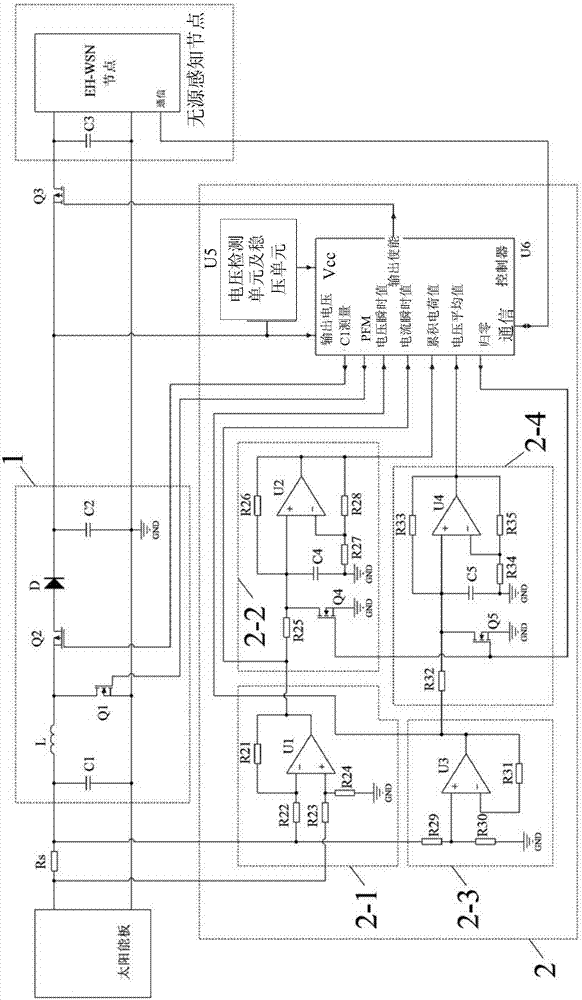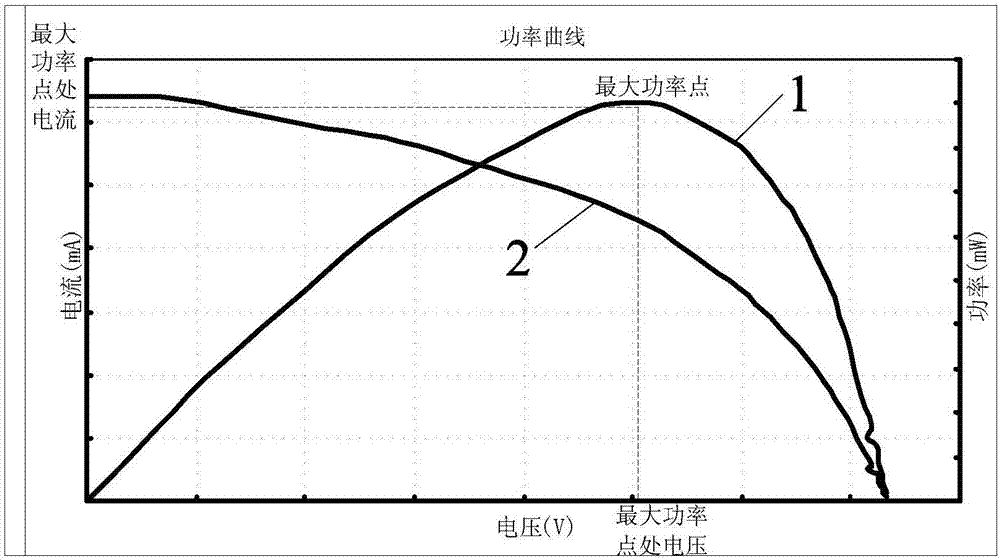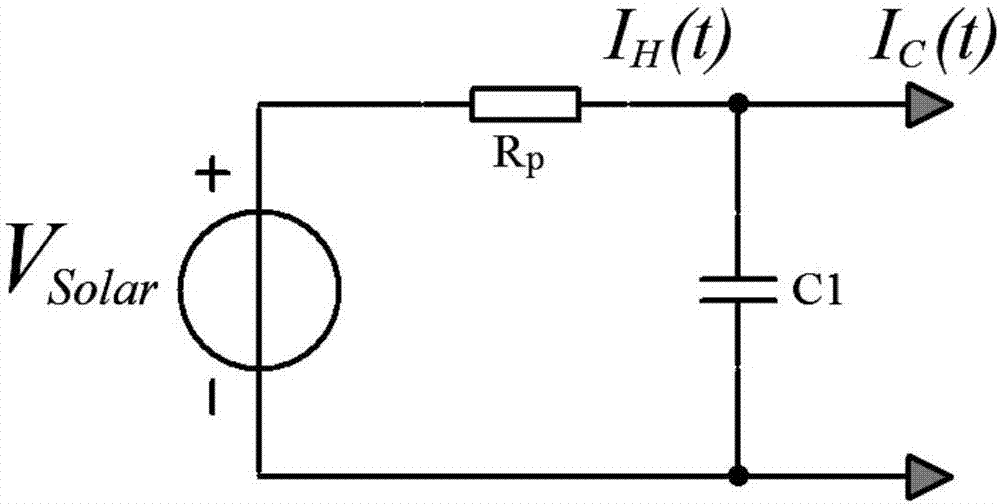Ultralow input power supply circuit for passive sensing network and power supply method realized by adopting circuit
A technology of input power and sensing network, which is applied in the direction of output power conversion device, DC power input conversion to DC power output, electrical components, etc., and can solve the problem of lack of energy supply for passive sensing nodes
- Summary
- Abstract
- Description
- Claims
- Application Information
AI Technical Summary
Problems solved by technology
Method used
Image
Examples
specific Embodiment approach 1
[0048] Specific embodiment one, combine 1 to Figure 4 Describe this embodiment, the ultra-low input power energy supply circuit for passive sensory network described in this embodiment, it includes solar panel, current sampling resistor Rs and PMOS tube Q3, it is characterized in that it also includes boost circuit (1) and maximum power point tracking control circuit (2),
[0049] The boost circuit (1) includes an inductor L, an electrolytic capacitor C1, an electrolytic capacitor C2, an NMOS transistor Q1, a PMOS transistor Q2 and a diode D,
[0050] The maximum power point tracking control circuit (2) includes a current amplification circuit (2-1), a current integration circuit (2-2), a voltage sampling circuit (2-3), a voltage integration circuit (2-4), a voltage detection unit and voltage stabilizing unit and controller,
[0051] The positive pole of the solar panel is simultaneously connected to one end of the current sampling resistor Rs and the non-inverting input en...
specific Embodiment approach 2
[0065]Embodiment 2. This embodiment is a further description of the ultra-low input power energy supply circuit for passive sensory networks described in Embodiment 1. The current amplification circuit (2-1), the current integration circuit (2- 2), the voltage sampling circuit (2-3) and the voltage integration circuit (2-4) are all implemented by operational amplifiers.
specific Embodiment approach 3
[0066] Specific embodiment three. This embodiment is a further description of the ultra-low input power energy supply circuit for passive sensing network described in specific embodiment one. The current amplifying circuit (2-1) is used to amplify the current on the resistor Rs Current, the output value of the instantaneous current signal output terminal of the current amplification circuit (2-1) is the instantaneous value of the current,
[0067] The current integration circuit (2-2) contains NMOS transistor Q4 inside, and the output value of the cumulative current signal output terminal of the current integration circuit (2-2) is the integral of the current in a period of time. According to Q=∫I(t)dt, a period of time The integral of the internal current is the input charge, which can be returned to zero through the NMOS transistor Q4,
[0068] The output value of the instantaneous voltage signal output terminal of the voltage sampling circuit (2-3) is the instantaneous valu...
PUM
 Login to View More
Login to View More Abstract
Description
Claims
Application Information
 Login to View More
Login to View More - R&D
- Intellectual Property
- Life Sciences
- Materials
- Tech Scout
- Unparalleled Data Quality
- Higher Quality Content
- 60% Fewer Hallucinations
Browse by: Latest US Patents, China's latest patents, Technical Efficacy Thesaurus, Application Domain, Technology Topic, Popular Technical Reports.
© 2025 PatSnap. All rights reserved.Legal|Privacy policy|Modern Slavery Act Transparency Statement|Sitemap|About US| Contact US: help@patsnap.com



